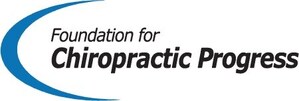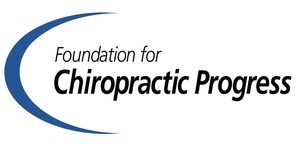SAN JOSE, Calif., March 27, 2019 /PRNewswire/ -- The Foundation for Chiropractic Progress, a not-for-profit organization dedicated to educating the public about the value of chiropractic care, celebrates the more than 70,000 doctors of chiropractic (DCs), along with the nearly one million allopathic (MD) and osteopathic (DO) doctors in the United States on National Doctors Day, which was federally recognized on March 30, 1990.
Chiropractic is a 123-year-old evidence-based practice recognized and licensed as a healthcare profession in all 50 states, along with the District of Columbia, Puerto Rico and U.S. Virgin Islands. Like other doctors, DCs undergo extensive education and training, including seven years of higher education. The DC curriculum includes a minimum of 4,200 hours of classroom, laboratory and clinical internship. In fact, the typical DC program is equivalent in classroom hours to allopathic and osteopathic medical schools.
"This national day of recognition that I share with my doctor colleagues in chiropractic, as well as osteopathic and allopathic disciplines, prompts me to reflect on my motivation to become a doctor of chiropractic," said Sherry McAllister, DC, executive vice president, F4CP. "My reasons extend beyond simply wanting to help patients manage their ailments. It is about healing the whole person and optimizing performance so that they begin living a healthier, more fulfilled life. I think that's why a lot of us choose to become doctors and it's something we need to remember on this important day."
How doctors of chiropractic offer a different approach:
Chiropractic training is focused on non-pharmacologic management of neuro-musculoskeletal pain, primarily of the back, neck and head. DC training, however, is also holistic and emphasizes improving general health, wellness, nutrition/diet and athletic performance. Today, as the U.S. continues to face an opioid epidemic, pursuing drug-free care to manage pain while focusing on holistic health and quality of life is more important than ever.
Dr. McAllister states, "Doctors of chiropractic can perform first-line assessment and care for neck, back and neuro-musculoskeletal dysfunction and pain to avoid opiate prescribing from the first onset of pain." She continues, "In addition, doctors of chiropractic can also provide education on self-care approaches to manage pain throughout periods of active care to mitigate the introduction of pharmacological agents. Through an effective approach to acute, subacute and chronic pain management, doctors of chiropractic can help patients achieve a wellness-focused, pain-free plan."
In recent decades, more allopathic and osteopathic doctors have recognized DCs as invaluable partners in collaborative, multidisciplinary care teams, in large part due to their non-pharmacological, conservative care approach to pain management. In fact, one recent study of nine medical facilities with on-site chiropractic care, including five hospitals and four clinics, found that "delivery of chiropractic services was perceived to have high value among patients, medical providers and administration." Researchers wrote that "Patient clinical outcomes, patient satisfaction, provider productivity and cost offset were identified as markers of clinical success."
In addition to providers, payers are also beginning to recognize the benefits of conservative care such as chiropractic, acupuncture and physical therapy. In a presentation on "The Role of Nonpharmacological Approaches to Pain Management" given by Optum at the National Academies of Science, Engineering and Medicine (NASEM) in Dec. 2018 in Washington, D.C., Optum shared that conservative care can save $230 million dollars in annual medical expenditures and can reduce opioid prescribing by 26 percent. In Optum's experience, conservative care costs an average of $619 per episode compared to $1,728 for a specialist.
Optum's goal in the next two years is to increase the use of conservative care pathways from 31 percent to more than 50 percent.
National Doctors Day Origins
National Doctors Day dates back to 1933 when Eudora Brown Almond, wife of Dr. Charles B. Almond, worked with the Barrow County Medical Auxiliary in Georgia to honor healthcare professionals for their service to the country. The first observance included the mailing of greeting cards and placing flowers on graves of deceased doctors.
The history of chiropractic dates even farther back than National Doctors Day. While various forms of spinal or joint manipulation had been around for hundreds of years, there had never been an attempt to create a philosophical or scientific rationale for their effects until 1895 when D.D. Palmer used his extensive study of anatomy and physiology to document and codify chiropractic.
Palmer later established the Palmer School of Cure (now the Palmer College of Chiropractic) in Davenport, Iowa, where it remains today. The first state licenses for DCs were issued in 1913, and by 1931, a total of 39 states had provided similar legal recognition.
About the Foundation for Chiropractic Progress
A not-for-profit organization, the Foundation for Chiropractic Progress (F4CP) informs and educates the general public about the value of chiropractic care and its role in drug-free pain management. Visit www.f4cp.org; call 866-901-F4CP (3427). Social media: Facebook, Twitter, LinkedIn, Pinterest, YouTube.
Media contact:
Marcia Rhodes, Amendola Communications for F4CP
[email protected]
480.664.8412 ext. 15
SOURCE Foundation for Chiropractic Progress
Related Links
WANT YOUR COMPANY'S NEWS FEATURED ON PRNEWSWIRE.COM?
Newsrooms &
Influencers
Digital Media
Outlets
Journalists
Opted In






Share this article